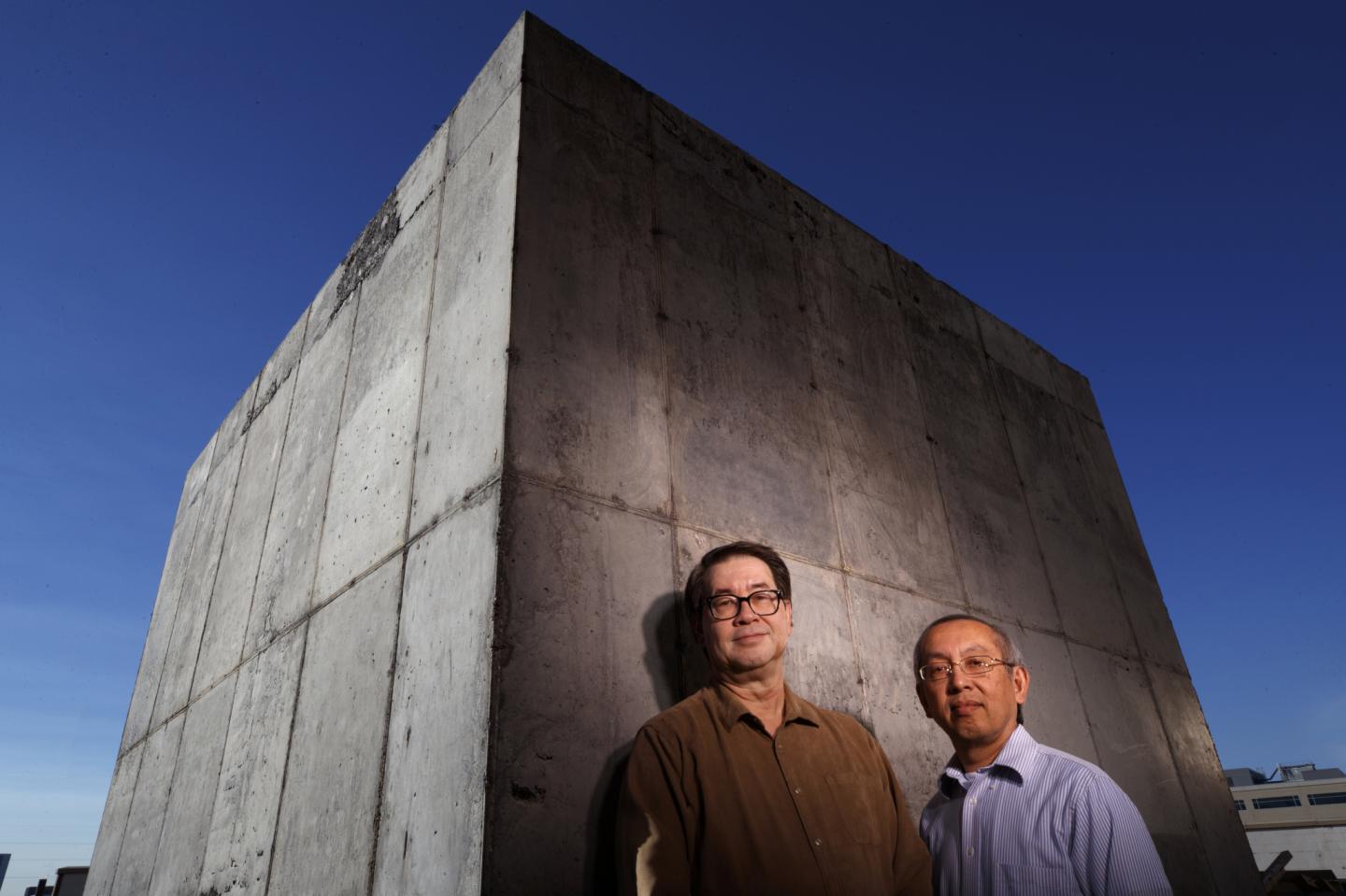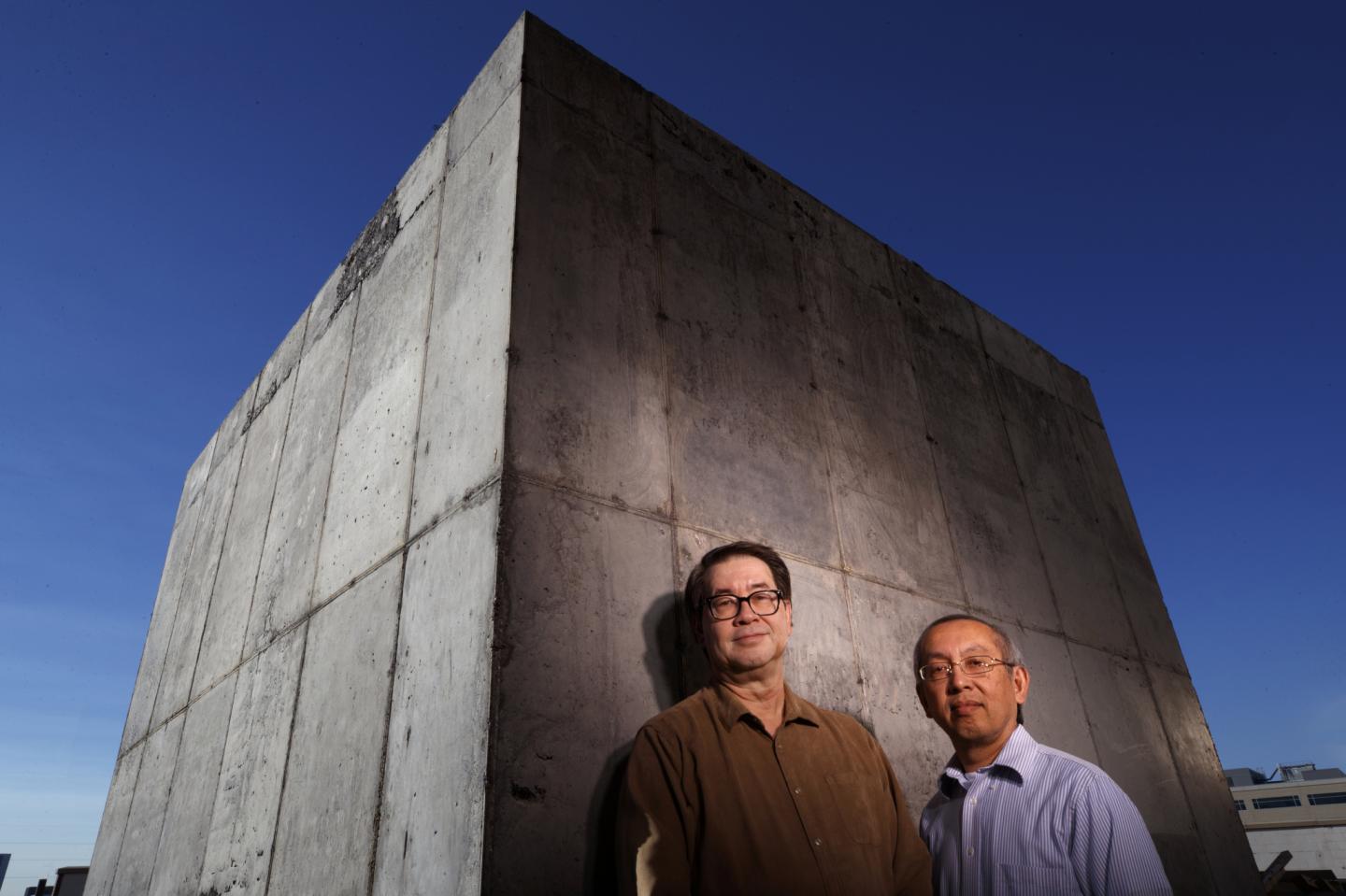
Credit: Craig Chandler/University Communication/University of Nebraska-Lincoln
An attack via a burst of electromagnetic energy could cripple vital electronic systems, threatening national security and critical infrastructure, such as power grids and data centers.
Nebraska engineers Christopher Tuan and Lim Nguyen have developed a cost-effective concrete that shields against intense pulses of electromagnetic energy, or EMP. Electronics inside structures built or coated with their shielding concrete are protected from EMP.
The technology is ready for commercialization, and the University of Nebraska-Lincoln has signed an agreement to license this shielding technology to American Business Continuity Group LLC, a developer of disaster-resistant structures.
Electromagnetic energy is everywhere. It travels in waves and spans a wide spectrum, from sunlight, radio waves and microwaves to X-rays and gamma rays. But a burst of electromagnetic waves caused by a high-altitude nuclear explosion or an EMP device could induce electric current and voltage surges that cause widespread electronic failures.
"EMP is very lethal to electronic equipment," said Tuan, professor of civil engineering. "We found a key ingredient that dissipates wave energy. This technology offers a lot of advantages so the construction industry is very interested."
EMP-shielding concrete stemmed from Tuan and Nguyen's partnership to study concrete that conducts electricity. They first developed their patented conductive concrete to melt snow and ice from surfaces, such as roadways and bridges. They also recognized and confirmed it has another important property – the ability to block electromagnetic energy.
Their technology works by both absorbing and reflecting electromagnetic waves. The team replaced some standard concrete aggregates with their key ingredient – magnetite, a mineral with magnetic properties that absorbs microwaves like a sponge. Their patented recipe includes carbon and metal components for better absorption as well as reflection. This ability to both absorb and reflect electromagnetic waves makes their concrete more effective than existing shielding technologies.
It's also more cost-effective and flexible than current shielding methods, Tuan said. Today's shielding technologies employ metal enclosures that require expensive metal panel or screen construction, limiting their feasibility in large structures.
Through a research agreement with ABC Group, the Nebraska team modified its shielding concrete to work with the company's shotcrete construction method. The resulting patent-pending product protects building interiors from electromagnetic interference, such as radio waves and microwaves, as well as electronic eavesdropping. The material could protect military, financial or other structures that store critical electronics, such as data servers or aircraft.
Shotcrete, a spray-on method of applying concrete, can be used to cost-effectively retrofit existing buildings, a significant benefit to protect existing critical infrastructure and military installations, Tuan said.
To demonstrate its effectiveness, ABC Group recently built a prototype structure at its disaster recovery complex in Lakeland, Florida. The structure exceeds military shielding requirements.
"The concrete has the ability to provide what we call a multi-threat structure," said Nguyen, professor of electrical and computer engineering, who traveled to Florida to evaluate the prototype building. "The structure has to be able to withstand an attack either by an explosive or an electromagnetic attack or other scheme."
Under the licensing agreement, ABC Group has exclusive rights to market the shielding shotcrete product, and its EMSS-Electromagnetic Shielding Shotcrete is now commercially available, said Mauricio Suarez, director of licensing at NUtech Ventures, the university's non-profit technology commercialization affiliate.
"Our proprietary construction methods, which incorporate the Nebraska-developed technology, enable us to construct high-strength, blast-resistant structures that exceed military electromagnetic shielding requirements," said Peter Fedele, ABC Group's CEO. "Our prototype building has been well received as a new shielding construction material by leading experts in the EMP community."
Tuan and Nguyen continue to investigate additional uses for conductive concrete, including improving de-icing and radiant heating and anti-static flooring applications. As new formulations expand the available applications, NUtech Ventures is helping the engineers apply for patents and navigate additional potential licensing agreements.
###
Media Contact
Chris Tuan
[email protected]
402-554-3867
@UNLNews
http://www.unl.edu
############
Story Source: Materials provided by Scienmag





